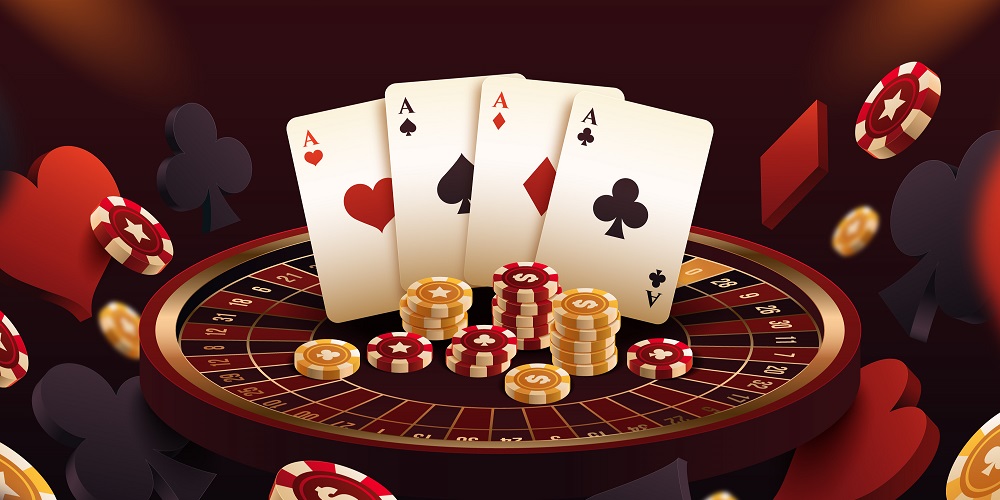
Discover how bluffing works in poker table games. Learn psychological tactics, reading opponents, and strategies to win in online games.
Introduction
Poker is a game that blends skill, strategy, and psychology, making it one of the most engaging online games available today. Unlike games of pure luck, poker requires understanding your opponents, managing emotions, and mastering the art of bluffing.
Bluffing is one of the most powerful tools in a poker player’s arsenal. Successfully bluffing can turn a weak hand into a winning play, but it requires deep insight into human behavior, probability, and risk assessment. This article dives into the psychology behind bluffing, exploring tactics, strategies, and practical applications for poker enthusiasts in Spin 777 online games.
Understanding the Basics of Bluffing
Bluffing in poker involves betting or raising with a weak hand to create the illusion of strength. Its goal is to influence opponents’ decisions and induce them to fold superior hands.
Key aspects of bluffing include:
-
Timing: Not every hand is suitable for a bluff. Optimal moments occur when the board favors your story or opponents show weakness.
-
Frequency: Bluffing too often can make you predictable, while never bluffing makes your plays transparent.
-
Storytelling: Each bet must fit the narrative of a strong hand, convincing opponents to act in your favor.
Understanding these fundamentals allows players to make strategic decisions in online games with a psychological edge.
Psychological Principles Behind Successful Bluffing
1. Reading Opponents
A successful bluff depends on your ability to interpret opponent behavior:
-
Tells: In live games, facial expressions, posture, and timing can reveal strength or weakness. In online games, patterns in betting speed, bet size, and timing provide clues.
-
Patterns: Observe how opponents play strong hands versus weak hands. Adapting your strategy to their tendencies increases bluffing success.
2. Emotional Control
Bluffing requires a calm, controlled demeanor:
-
Confidence: Convincing bluffs often rely on projecting certainty and decisiveness in your actions.
-
Patience: Waiting for the right opportunity ensures your bluffs are effective and believable.
-
Avoiding tilt: Emotional reactions can betray your intentions and compromise your strategy.
3. Risk Assessment
Effective bluffing is grounded in calculating risk:
-
Pot odds: Compare the current bet size to the pot to determine if the bluff is mathematically justified.
-
Opponent tendencies: Aggressive opponents may call more often, requiring more cautious bluffing.
-
Stack sizes: Consider your chip count relative to opponents—bluffs are riskier when short-stacked.
Types of Bluffs in Poker
1. Pure Bluff
A bet made with little or no chance of winning unless opponents fold. Ideal in situations where opponents show hesitation or uncertainty.
2. Semi-Bluff
A bet made with a hand that has potential to improve in later rounds, such as a drawing hand. Even if called, it can develop into a winning hand.
3. Continuation Bluff
Executed after raising pre-flop, regardless of whether the flop improves your hand. This type of bluff relies heavily on consistency and narrative strength.
4. Opportunistic Bluff
Based on situational advantage, such as a scared or inexperienced opponent, favorable table position, or a board that likely misses opponents’ hands.
Implementing Bluffing in Online Games
Online poker presents unique challenges and opportunities for bluffing:
-
Absence of physical tells: Focus on betting patterns, timing, and statistical tendencies.
-
Multi-tabling: Observing multiple tables helps refine bluff timing and frequency.
-
Software analysis: Use tracking tools to study opponent behavior over time, identifying weak spots for successful bluffs.
Bluffing online requires meticulous planning and precise execution to maintain credibility.
Common Mistakes in Bluffing
Even experienced players can sabotage their strategy with predictable mistakes:
-
Bluffing too frequently: Makes you easy to read and reduces impact.
-
Ignoring board context: Unfavorable boards reduce the chances of a successful bluff.
-
Bluffing the wrong opponent: Aggressive or experienced players are more likely to call.
-
Overbetting or underbetting: Incorrect sizing can betray your intentions or fail to create pressure.
Avoiding these pitfalls is essential for maximizing the effectiveness of your bluffing strategy.
The Role of Table Image
Your table image—the perception opponents have of your play style—affects bluffing success:
-
Tight players: Bluffing is more believable when your table image is selective and conservative.
-
Loose players: Frequent aggressive actions may make bluffs less credible.
-
Dynamic adjustments: Continuously adapt your table image to enhance unpredictability and maximize psychological leverage.
Advanced Bluffing Techniques
1. Reverse Tells
Intentionally displaying misleading behavior to induce specific reactions from opponents. For example, acting nervous while holding a strong hand.
2. Multi-Level Thinking
Consider what your opponent believes you believe. By anticipating their thought process, you can craft bluffs that exploit their assumptions.
3. Meta-Game Bluffing
Strategic bluffs aimed at influencing future hands, building a reputation, or creating long-term advantage.
Integrating Strategy with Probability
Bluffing is most effective when combined with statistical understanding:
-
Hand ranges: Estimate the likely hands your opponents hold.
-
Folding probabilities: Analyze which hands are most likely to fold to your bluff.
-
Expected value: Evaluate the potential payoff relative to risk, ensuring profitable bluffing decisions over time.
Strategic and probabilistic integration ensures that bluffing is not just psychological, but mathematically sound.
Conclusion
Mastering the psychology of bluffing in poker table games elevates gameplay from chance-based to skill-based strategy. By understanding opponent behavior, managing emotions, assessing risk, and integrating probability, players gain a significant edge in online games.
Whether playing for fun or competing in tournaments, developing bluffing skills enhances both success and enjoyment. Embrace these tactics, refine your strategy, and support the growing league of poker enthusiasts. Dive into online games, practice mind games, and elevate your poker mastery today.

